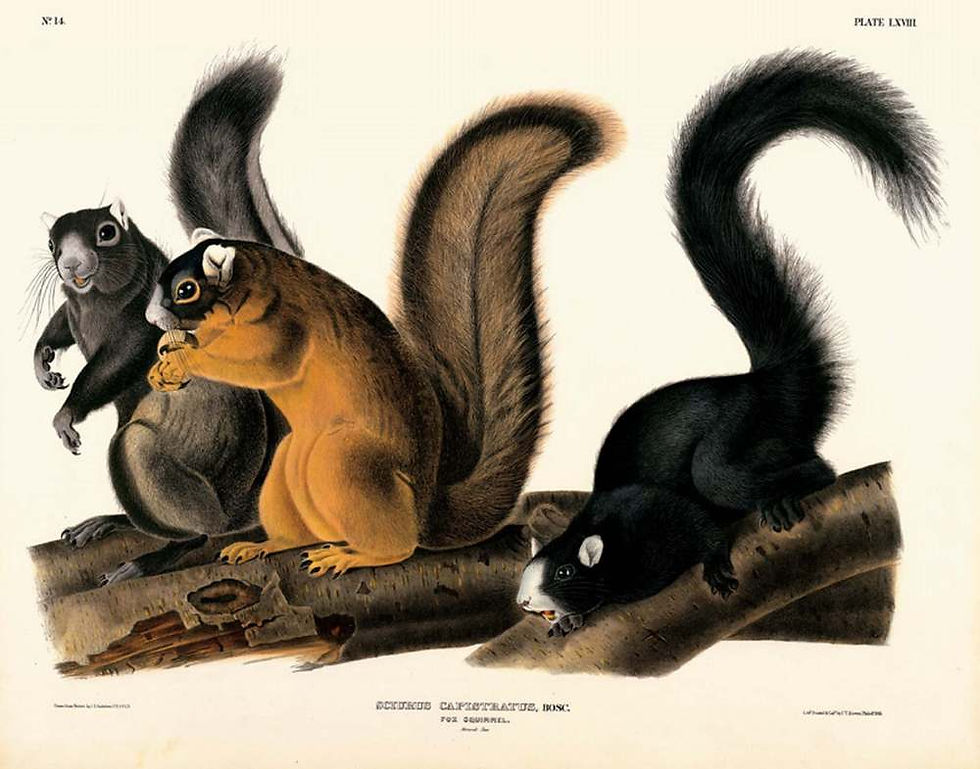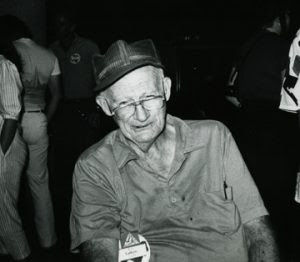Domdaniel
- Jon Nelson
- 2 days ago
- 6 min read
Updated: 17 hours ago

After wrapping up the Oceanic section of the blog, I’ve been thinking about Fair Hills of Ocean, Oh!, and Domdaniel. Lafferty readers will recognize the name Domdaniel. It appears now and then throughout his work. He mentions it in Not to Mention Camels, among the ocean of archetypes: "With Corn Mother, with Fenris-Wolf, with Hermaphrodite, with Python there was a new lodger in Domdaniel, the castle that is under the ocean." There’s a playful exchange about it between Epiktistes and Audifax in Arrive at Easterwine: "'Tell me what you know of the great machine in Domdaniel cavern that is under the sea.'" An epigraph in Serpent’s Egg refers to it, too, where it looks as if it is being attributed to Mark Twain but isn't: "The Castle named Domdaniel which is at the bottom of the ocean." And there are a few other scattered references.
In 1978, Sheryl Smith, smartly on the scent, sensed how important Domdaniel was to Lafferty, and she asked him about it. His reply is significant. It suggests the place had taken on a life of its own in his imagination, one that no longer lined up neatly with its sources.
“There are lots of references to the place or the castle Domdaniel,” he wrote. “It means house of Daniel, and the Daniel is probably the one from the Bible. In one of its aspects, it’s a mix of lion’s den, snake pit, and dragon’s labyrinth, with a lot of slimy things in it also. In another of its aspects, it’s a leisure palace, leaving nothing to be desired. There is a dispute about which is its real appearance, but it changes from one to the other.”
Lafferty went on to give the origin of Domdaniel, a French continuation of the Arabian Nights (here Englished), published in the late 18th century by Dom Chaves and Jacques Cazotte. There’s an interesting backstory about these two, but the short version is that they were out to make money. Yes, they were hacks. Their version of Domdaniel is about as Arabian as Robin Williams being a genie. It’s heavily colored by Christianity, for one thing. Crucially for Lafferty, the place is located underwater. Not so crucially, Chavez and Cazotte placed it under the Mediterranean Sea, near Tunis. Lafferty says Chaves and Cazotte put Domdaniel in the deepest part of the ocean, which would locate it in the Pacific.
But that is trivial. Lafferty then does something interesting. He writes, “They gave the place a better name than others did though, taking it only in its pleasant aspect. There was, among other things, a head magician who ran a school for apprentice magicians in the castle, but they seem to have all been good magicians.”
What appears to interest Lafferty is the ambiguity he perceives in the idea. Some writers treat Domdaniel as a place of evil, some as good. In fact, Chaves and Cazotte made it evil as can be. No writer before Lafferty suggests anything about good magicians. This seems to be pure Lafferty.
In the continuation of the Arabian Nights, Domdaniel is the base of operations for the black-hearted sorcerer Maugraby, by far the most interesting character in the continuation, who goes around corrupting Arab princes. It’s not a castle, either, but a cavern under the sea. Notably, it has nine gates. That detail may have stuck with Lafferty, who writes of the nine walls in Domdaniel’s dungeon in Fair Hills.
Lafferty also notes that Domdaniel became a kind of hate-word in Carlyle, which is true (I suspect he got this from the OED), but he skips what might be its most important appearance in British literature, Robert Southey's Thalaba the Destroyer (1801), about which more in a minute. Why does Lafferty do this?
My theory is that it wasn’t Southey whom Lafferty had in mind when he thought of Domdaniel, but Chesterton—who likely first put the name on his radar. Chesterton mentions it in a key passage of The Everlasting Man (1925). This passage clearly influenced Lafferty and echoes in “Dorg,” the Austro stories, and in The Three Armageddons of Enniscorthy Sweeny.
A priest and a boy entered some time ago a hollow in the hills and passed into a sort of subterranean tunnel that led into a labyrinth of such sealed and secret corridors of rock. They crawled through cracks that seemed almost impassable, they crept through tunnels that might have been made for moles, they dropped into holes as hopeless as wells, they seemed to be burying themselves alive seven times over beyond the hope of resurrection. This is but the commonplace of all such courageous exploration; but what is needed here is some one who shall put such stories in the primary light, in which they are not commonplace. There is, for instance, something strangely symbolic in the accident that the first intruders into that sunken world were a priest and a boy, the types of the antiquity and of the youth of the world. But here I am even more concerned with the symbolism of the boy than with that of the priest. Nobody who remembers boyhood needs to be told what it might be to a boy to enter like Peter Pan under a roof of the roots of all the trees and go deeper and deeper, till he reach what William Morris called the very roots of the mountains. Suppose somebody, with that simple and unspoilt realism that is a part of innocence, to pursue that journey to its end, not for the sake of what he could deduce or demonstrate in some dusty magazine controversy, but simply for the sake of what he could see. What he did see at last was a cavern so far from the light of day that it might have been the legendary Domdaniel cavern that was under the floor of the sea.
Most people today have little patience for Robert Southey (1774–1843), but I like him quite a bit. Lafferty may not have shared that view. Southey was very much Church of England in a latitudinarian way. He was, despite his reputation for being a bleeding heart, also very much against Catholic emancipation, for which Lord Macaulay raked him over the coals. These days, if Southey is remembered at all outside the academy, it’s for something few people connect with his name: Goldilocks and the Three Bears. Southey’s version has no Goldilocks; instead, the intruder is Silver-hair, who does the breaking and entering.
Strangely enough, this version of the story appears in one of his most difficult works: The Doctor, a sprawling, multi-volume, quasi-novel that also happens to be one of his most interesting. He poured a ton of trivia into it.
A digression. If you don't know about him, Robert Southey was an English poet, historian, and biographer, one of the Lake Poets alongside William Wordsworth and Samuel Taylor Coleridge. Born in Bristol on August 12, 1774, he became Poet Laureate in 1813, a position he held until his death. His works include the epics Thalaba the Destroyer and Madoc (1805), along with biographies, essays, and histories. Though he’s less celebrated now than his contemporaries, he was deeply influential in his time, a prolific writer and public intellectual who shapes Romantic literature and the cultural discourse of his age.
So what did he do with Domdaniel? In short, he put it on the map, including on Chesterton's map. Thalaba the Destroyer is what brought Domdaniel into the English imagination. It was the favorite poem of both Shelley and Cardinal Newman, perhaps the only thing you can say the two have in common beyond being both English and male. It's well worth reading if you can take Southey, who tends to frustrate both ends of the political spectrum. (If you want a sense of Southey as a person, the best place to start is with Southey's letters and the gossipy diaries of Henry Crabb Robinson, which are very funny.)
Southey's stock has been low since his death for many reasons because he really makes few readers completely happy. He was a poet who distrusted metaphor. He was a moralist who lacked much passion. Tories like the wonderful George Saintsbury (1845–1933) admired much about Southey but tolerated his softness. What we’d now call liberals have tended to fall into the camp of William Hazlitt, who skewered him with precision when he wrote that Bob Southey “wooed Liberty as a youthful lover, but it was perhaps more as a mistress than a bride; and he has since wedded with an elderly and not very reputable lady, called Legitimacy.”
In Thalaba the Destroyer (1801), Southey writes that Domdaniel is a “Seminary for evil Magicians under the Roots of the Sea.” It’s a vast, undersea cavern that serves as headquarters, training ground, and council chamber for a brotherhood of wicked sorcerers. Here, apprentices are taught the dark arts, conspiracies are plotted, and rituals performed to preserve the cabal’s power, such as the extinguishing of magical flames, each flame standing for an enemy fated to die. It is also a place of prophecy, where the magicians attempt, in vain, to subvert Providence by watching omens and consulting oracles.
Physically, the cavern is an immense, ocean-vaulted hall, its ceiling made of magically suspended seawater, upheld by a colossal living idol of Eblis. The idol wears a crown of meteor-fire and holds a scepter that, when touched to the enchanted globe-altar before him, brings destruction upon the world. In Southey's Domdaniel, natural cavern and supernatural enchantment are an engine of evil.
Domdaniel is a good example of Lafferty’s imagination as an alchemical furnace, transmuting materials into great, awkward gold.


